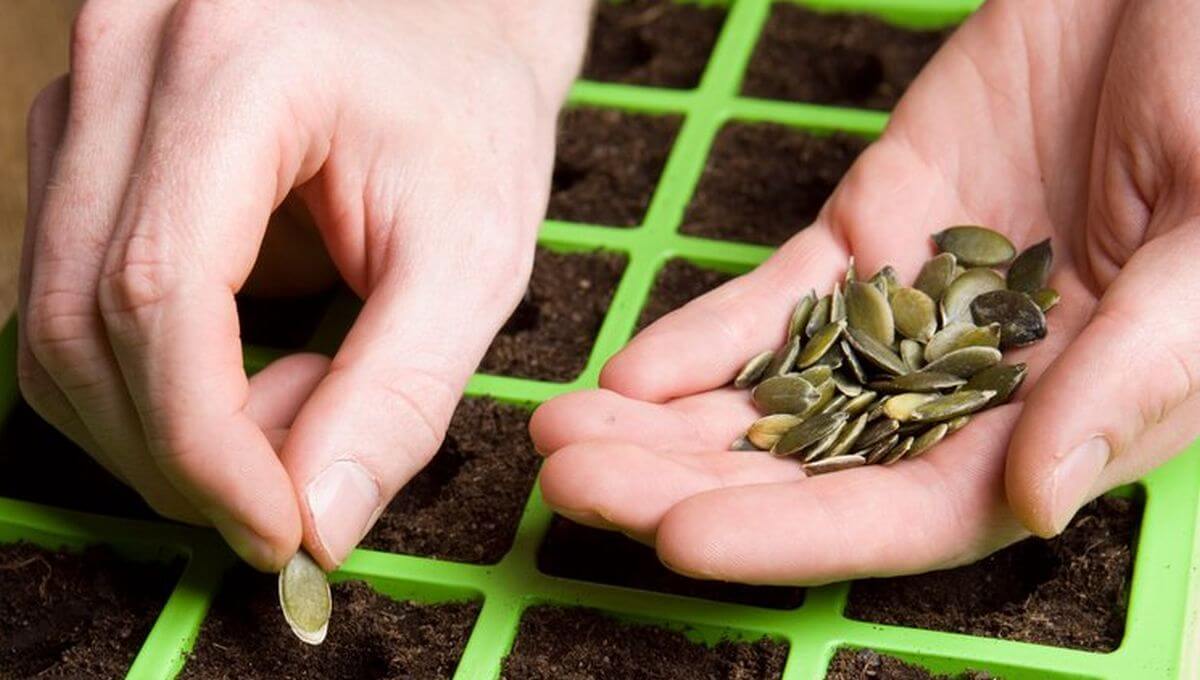Autumn is often considered a time of abundance for harvests in the vegetable garden. Crops produced and tended in spring and summer are now in the spotlight and the harvest season can be at its busiest. However, autumn also remains an ideal time to sow a whole series of vegetables .
Fall vegetables to plant can be fast-growing crops, to be harvested during the fall and winter, or vegetables that take a little longer and will be ready the following year. In autumn, the soil is warm enough for seeds to germinate quickly and plants to grow quickly before the onset of cold weather.
sow in October vegetable garden
When I was a professional vegetable grower, I grew vegetables for restaurant chefs throughout the year. There were weekly harvests throughout the fall and winter months, with planting planned well into the fall to ensure we could provide fresh vegetables throughout the winter and early spring. We look at some of the best crops that are ideal for fall planting and help quickly fill a fall vegetable garden with plants that will provide harvests through the colder months and into the following season.
What vegetables can you still plant in autumn?
Broccoli rabe vegetable garden
- Broccoli rabe
Broccoli rabe, also known as rapini, is a fast-growing fall vegetable that produces small broccoli-like heads. All parts of the plant, from the head to the leaves to the stems, are edible. Easy to grow, it is a cool season vegetable that is best sown in spring and fall. You should sow broccoli rabe seeds directly into the vegetable garden at least eight weeks before the first frost for your area. Broccoli rabe varieties can take up to 40 days from sowing to first harvest. - Bok choy
Bok choy is another vegetable that doesn’t like hot weather, and so tends to be sown in the spring and fall. This Asian crop, also known as pak choi or Chinese cabbage, produces edible stems and leaves. Bok choy can be harvested as tender leaves or grown to maturity for use in stir-fries. Sow the seeds directly in fertile soil, to a depth of about 1 cm, using successive sowings to ensure a regular harvest. Bok choy grows quickly, young leaves can be ready in 30 days, while it takes 60 days for adult plants. Sow in early fall for a later harvest. You can get Bok Choy seeds online, they can be ready to harvest in 40-45 days.
Read also: Growing Rhubarb – tips on how to grow rhubarb
- Spinach
Winter hardy varieties can be sown in early fall to provide a harvest of spinach during the colder months. You can grow spinach in the ground, in raised beds, or in vegetable garden containers. Sow the seeds directly into the soil, at a depth of 2 cm, about six weeks before the first frost, in a sunny spot in the garden. Winter cultivars can be harvested between October and April. Consider installing spinach companion plants nearby to protect your crop from pests that will want to nibble on the leaves. - Endives
Endive looks like lettuce, but its leaves, which can be broad or curly, have a more bitter taste. It is a popular crop where the young leaves are harvested barely a month after sowing. It can add additional flavor to mixed salads. Endive seeds can be sown in the fall for a harvest during the winter months.
vegetable garden radish
- Radishes
Radishes are very fast growing vegetables that can be sown in the fall for quick harvests. If you are growing radishes in pots, you can move them under cover when cold weather arrives to extend the summer radish season.
There are also varieties of winter radishes, which grow more slowly and are larger than the usual summer radishes. These radishes are planted in the fall, spaced further apart than summer radishes, and can be ready after 10 weeks. This means you can harvest radishes throughout the winter as these winter radish varieties can be left in the ground to be harvested as needed.
Read also: Cucumbers – tips on how to grow cucumbers
- Lettuce
There is a wide variety of lettuce, with a plethora of colors, shapes and flavors. Growing lettuce is versatile because you can grow leaves that cut and recompose or leaves that form heads that you pick whole. Lettuces can be planted into the fall and they appreciate these cooler conditions. You can get quick harvests of lettuce, in just 30 to 40 days for young leaves. There are many types of lettuce to plant in fall and winter that can provide you with leaves during the colder months. If you have a greenhouse or polytunnel, you will have even more options and you can even grow lettuce indoors in winter to get harvests all year round.
green cabbage leaves
- Green cabbage leaves
Collard greens are a common ingredient in southern cuisine and another cool-season vegetable perfectly suited for fall planting. Growing this frost-tolerant vegetable is similar to growing kale, and frost actually improves the flavor of the leaves.
Collard greens eaten for the leaves are often planted in spring or early fall, with fall planting able to provide a harvest throughout the winter. Plant the seeds at least six weeks before frost arrives and it may be up to 60 days before you harvest the first leaves. To harvest collard greens, you can either remove individual leaves or cut the entire plant. You can get kale seeds of the Morris Heading variety which can be ready for harvest in 75-85 days.
- Onions
Onions are a staple crop of many vegetable gardens around the world and can be planted in fall or spring. Fall onions are planted from September to November to be harvested the following summer. Onion plants are easier to grow than onion seeds, although you can also sow onion seeds in the fall if you wish. It is not advisable to attempt to grow onions over winter in very heavy or waterlogged soils. Onions planted in the fall are harvested about six weeks earlier than onions planted in the spring.
Also read: 5 Crops You Can Still Plant in September
big head garlic
- Garlic
Garlic is a crop that is best planted in the fall, while some varieties can still be planted in the spring. If you are growing garlic it needs a very long growing period, with varieties needing a cold spell of a few months for the bulb to develop properly.
You can grow hardneck or softneck garlic, each of which has its advantages and disadvantages. Hard-headed garlic is hardier than soft-headed garlic and can survive winter climates better. These types of garlic should be planted in the fall, as they need this cold period. If you want to grow elephant garlic, it is also best to plant the bulbs in the fall, if you want to have large heads of garlic . The ideal time to plant garlic is between mid-fall and early winter.
- Beans
Broad beans, also known as beans, can be sown directly into the ground in the fall to provide an earlier harvest of beans the following year. These crops can germinate at low temperatures and to plant fava beans, simply push each large fava bean seed 5cm into the soil, at a distance of about 15-20cm from each other. When growing broad beans , be sure to choose a variety suitable for fall planting as some varieties are only suitable for spring sowing.
If you want to start a vegetable garden, it’s relatively simple to make it productive all year round with a little planning. Even a small vegetable garden is capable of providing fresh home-grown vegetables throughout the year through successive plantings and sowing. Don’t underestimate the amount of vegetables you can plant in the fall for delicious harvests over the next few months . Finally, you can also take a look at the 11 best vegetables to sow and grow in October for the upcoming bountiful harvests.

